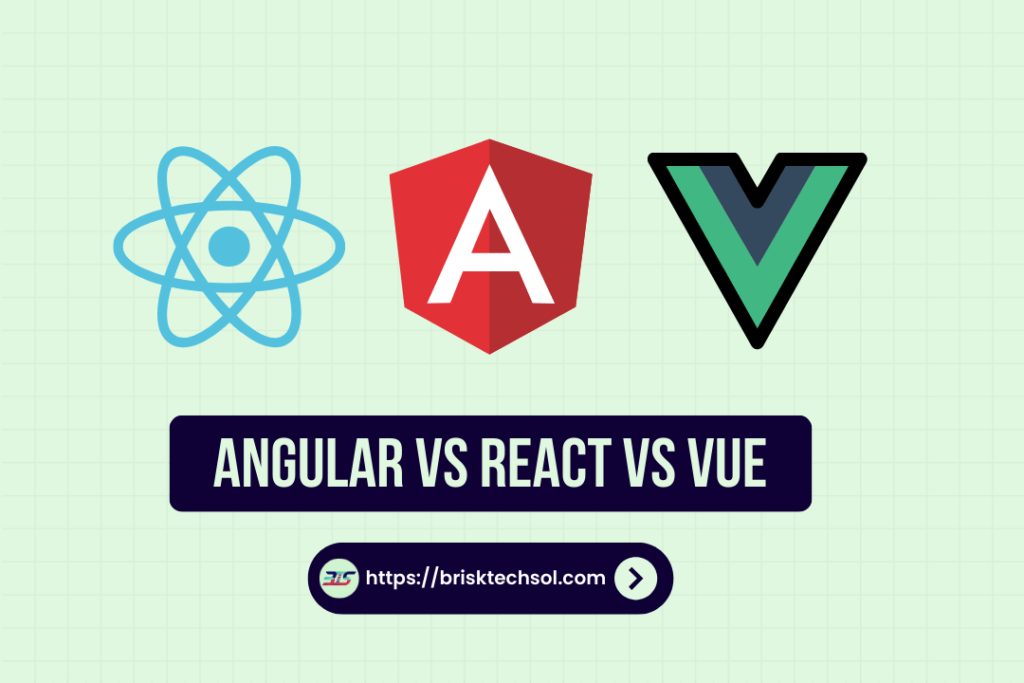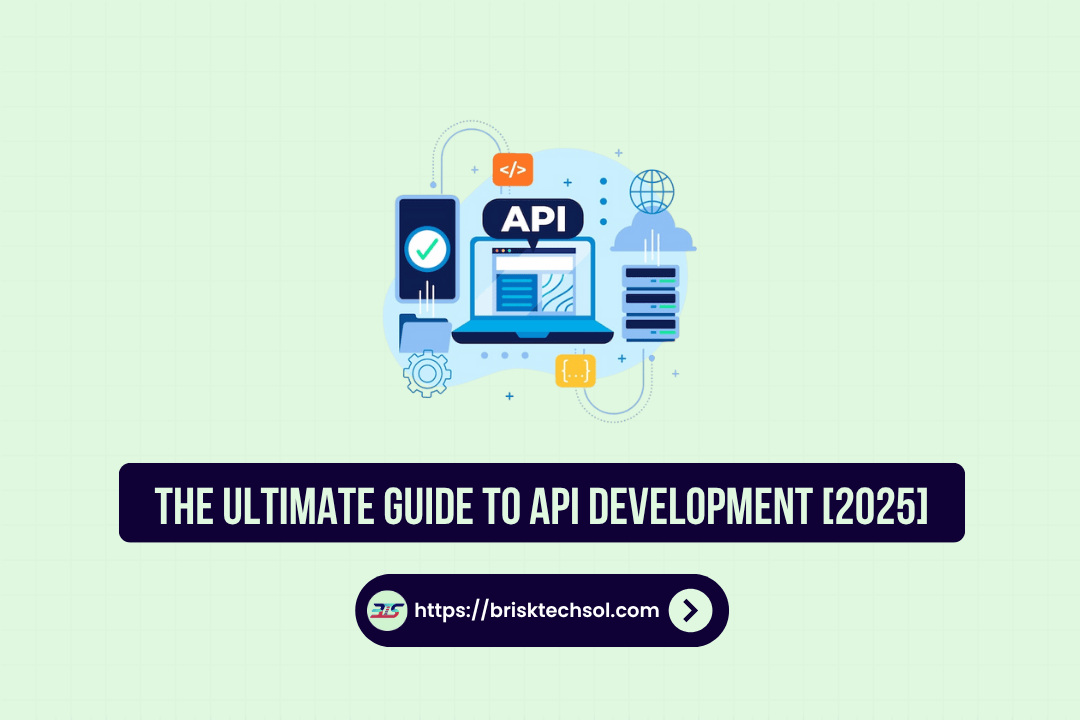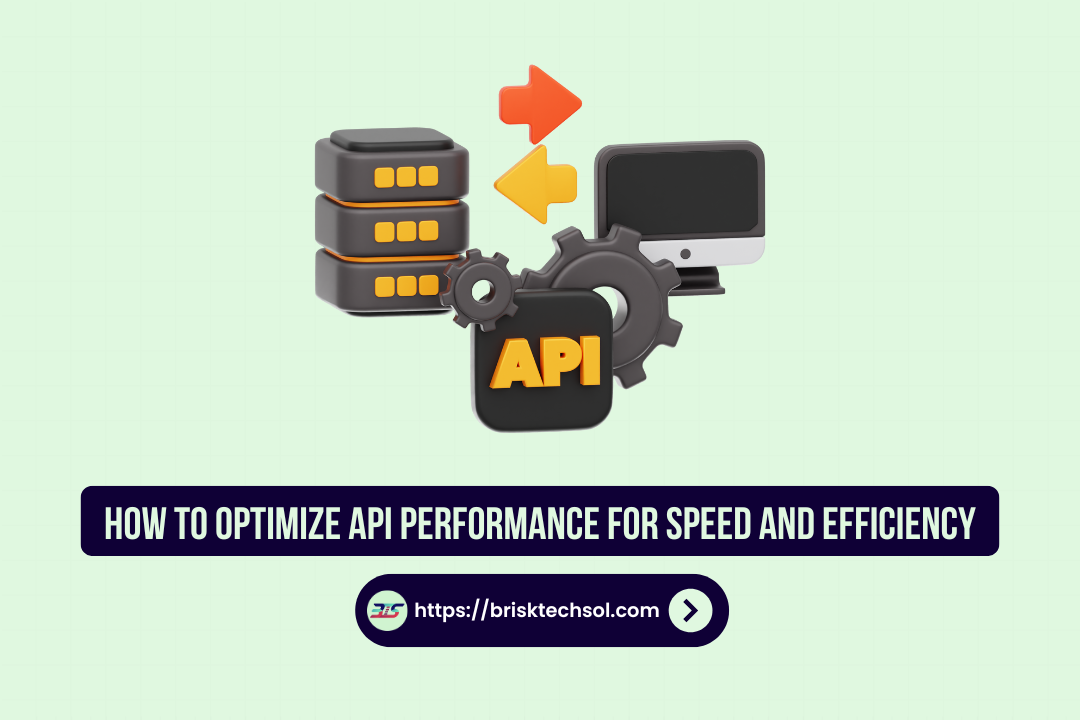In the world of front-end development, Angular, React, and Vue are the top three JavaScript frameworks competing for popularity. Each has its strengths, use cases, and developer communities. But which one is the most popular in 2025? This article dives deep into their market share, adoption rates, and performance to help developers and businesses choose the right framework.
Overview of Angular, React, and Vue
What is Angular?
Angular is a TypeScript-based front-end framework developed by Google. It is commonly used for building enterprise-level applications that require scalability and maintainability. Angular follows the MVC (Model-View-Controller) architecture, making it a structured choice for large projects. It also comes with built-in tools like dependency injection, routing, and state management, reducing the need for third-party libraries. However, Angular has a steeper learning curve due to its complex syntax and strict structure.
🔹 Key Features:
- Component-based architecture for modular development
- Two-way data binding for real-time UI updates
- Built-in dependency injection for scalable applications
- Powerful CLI (Command Line Interface) for easy project setup
What is React?
React is a JavaScript library developed by Meta (formerly Facebook), designed for building dynamic and reusable user interfaces. Unlike Angular, React is not a full-fledged framework but a UI-focused library that relies on additional tools like Redux or React Router for state management and navigation. One of React’s biggest advantages is the Virtual DOM, which makes UI updates faster by rendering only the necessary components instead of reloading the entire page.
🔹 Key Features:
- Virtual DOM for optimized performance
- One-way data binding for better control over UI updates
- Component-based structure for reusable code
- Large ecosystem with tools like React Native for mobile development
What is Vue?
Vue.js is a progressive JavaScript framework created by Evan You. It is known for its simplicity, lightweight nature, and ease of integration into existing projects. Unlike Angular and React, Vue offers two-way data binding like Angular and a Virtual DOM like React, making it a well-balanced choice for developers who want flexibility. Vue’s learning curve is much lower compared to Angular and React, making it a preferred option for beginners and startups.
🔹 Key Features:
- Easy integration into existing projects
- Two-way data binding for real-time updates
- Virtual DOM for fast rendering
- Simple syntax and beginner-friendly learning curve
Popularity Trends Over Time
Google Trends Analysis
Google Trends data over the past five years reveals a fascinating picture of framework popularity. React has consistently led search queries worldwide, reflecting its dominant position in the developer community. Angular, while once the industry’s favorite, has experienced a gradual decline in search interest. Meanwhile, Vue has steadily risen, especially in regions like Asia and Europe, as more startups and independent developers adopt it for rapid prototyping and small‑to‑medium projects.
In recent trends, React’s strong growth is driven by its robust ecosystem and widespread enterprise usage, while Vue’s appeal lies in its simplicity and flexibility. Angular’s stability in search trends indicates its sustained role in large‑scale projects despite overall reduced buzz.
GitHub Stars and Community Engagement
GitHub stars serve as a proxy for community interest and open‑source contribution levels. React and Vue both boast over 200,000 stars, highlighting a vibrant community that actively supports their growth. Angular, with fewer stars, remains a favorite for enterprise developers who appreciate its comprehensive tooling and structure. Open‑source contributions and frequent commits further reinforce React’s and Vue’s popularity among developers eager to innovate and share solutions.
🔹 Highlights:
- React: Over 210K stars
- Vue: Around 210K stars
- Angular: Approximately 85K stars
Industry Adoption and Corporate Backing
Major companies have built their fortunes on these frameworks. React powers tech giants like Facebook, Netflix, and Airbnb, while Angular is the backbone for applications at Google, Microsoft, and IBM. Vue, although emerging later, has made significant inroads with companies such as Alibaba, Xiaomi, and GitLab. The strategic choices by these organizations emphasize the strengths of each framework in addressing different business needs, from rapid development cycles to robust, scalable architectures.
Global Trends and Regional Differences
Regional trends further illustrate the frameworks’ unique trajectories. In North America and Europe, React’s popularity is nearly ubiquitous, bolstered by its versatile ecosystem. In contrast, Angular still finds a stronghold in large enterprises in these regions. Vue has seen remarkable growth in Asia, where its simplicity and rapid development cycle align well with market demands. This global diversity underscores the fact that no single framework fits all, and regional needs play a critical role in shaping popularity.
GitHub Stars & NPM Downloads
NPM download statistics reflect real‑world usage. React leads with an astonishing 15 million+ weekly downloads, confirming its widespread adoption in both new and established projects. Vue follows with roughly 5 million weekly downloads, while Angular’s usage, though lower at around 2.5 million, underscores its dominance in the corporate sector. These figures are a clear indicator of the trends in adoption and project scale, with React appealing broadly to startups and enterprises alike.
| Framework | GitHub Stars | NPM Weekly Downloads |
|---|---|---|
| React | 210K+ | 15M+ |
| Angular | 85K+ | 2.5M+ |
| Vue | 210K+ | 5M+ |
🔹 Key Takeaways:
- React has the highest number of downloads, making it the most widely used framework.
- Vue is growing rapidly in the developer community, especially among startups.
- Angular remains strong in enterprise applications but lags in open-source adoption.
Market Share & Job Trends
Corporate Usage and Market Penetration
Market share in the technology landscape is a critical measure of success. React’s integration into high‑profile projects by companies like Netflix, Facebook, and Airbnb has propelled it into the top tier of web development tools. Angular, favored by enterprise giants such as Google and IBM, remains integral to large‑scale applications. Vue’s rising market share, particularly in startups and mid‑sized projects, reflects its ability to deliver results quickly with less overhead. Each framework caters to a specific segment of the market.
Job Market Trends and Developer Demand
Job market trends provide a tangible measure of a framework’s influence. In 2024, job listings for React developers exceed 250,000 positions globally. Angular job postings, though fewer at around 120,000, still indicate strong demand in enterprise sectors. Vue, with approximately 80,000 job listings, continues to grow as more companies adopt it for innovative projects. These trends illustrate that while React offers vast career opportunities, Angular and Vue cater to niche roles that require specialized expertise.
Adoption by Industry Leaders
A closer look at industry adoption shows a clear division of labor:
- React: Dominates in technology startups and dynamic web applications.
- Angular: Preferred by large corporations with complex, multi‑tiered systems.
- Vue: Gains traction in creative agencies and companies needing rapid development cycles.
These industry choices are driven by each framework’s inherent strengths and the specific demands of their projects. The competitive market share of these tools is reinforced by their performance in real‑world applications, making them critical components of modern web development strategies.
Global Market Penetration
The geographic distribution of market share also highlights important trends. React’s extensive global adoption is matched by Angular’s strong presence in North America and Europe, where large enterprises demand stable, long‑term solutions. Meanwhile, Vue has seen exponential growth in Asia and parts of Europe, particularly among emerging tech firms and innovative startups. This global penetration is a testament to the adaptability of each framework to various business environments.
Comparative Market Share Table
Below is a table summarizing key market metrics in 2024:
| Framework | GitHub Stars | NPM Weekly Downloads | Major Users |
|---|---|---|---|
| React | 210K+ | 15M+ | Facebook, Netflix, Airbnb |
| Angular | 85K+ | 2.5M+ | Google, Microsoft, IBM, PayPal |
| Vue | 210K+ | 5M+ | Alibaba, Xiaomi, GitLab |
Investor and Community Confidence
Investor confidence is closely linked to market share. Funding rounds and acquisitions in the tech sector often mention React’s scalability and Vue’s agile performance as key factors. Angular, though less discussed in startup circles, remains a trusted tool for enterprise applications where reliability is paramount. Community forums and developer surveys consistently rank these frameworks highly, ensuring continued innovation and support.
Market Share Summary
Overall, the market share data indicates that React leads by a significant margin in terms of downloads, job listings, and global adoption. Angular continues to be indispensable for enterprise‑level applications, while Vue’s steady rise among startups and emerging companies promises a bright future. These trends provide valuable insight into which framework might best suit your business or career path.
Performance & Scalability
Rendering Performance and Virtual DOM
Rendering performance is critical for modern web applications. Both React and Vue utilize a Virtual DOM to optimize rendering, updating only the parts of the user interface that change. This results in faster load times and smoother user experiences. Angular, in contrast, uses a real DOM, which can slow down complex applications but provides other advantages in terms of structure and built‑in features. The choice of rendering engine significantly influences performance benchmarks.
Memory Usage and Application Efficiency
Memory consumption is another important factor. React and Vue generally have smaller bundle sizes and more efficient memory usage compared to Angular. Angular’s larger footprint is often justified by its comprehensive toolset and out‑of‑the‑box solutions for enterprise needs. However, when performance is critical—such as in dynamic single‑page applications—React and Vue typically deliver superior efficiency. Developers must weigh these tradeoffs when selecting the optimal framework.
🔹 Performance Comparison at a Glance:
- React: Lightweight, excellent for dynamic updates
- Vue: Equally lightweight, known for fast rendering
- Angular: Heavier, but offers robust structure for large applications
Scalability in Large Applications
Scalability remains a cornerstone of enterprise development. Angular’s strict architectural patterns and dependency injection make it ideal for large‑scale applications that require long‑term maintenance and consistency. React, with its flexible ecosystem, allows for scalable solutions through well‑structured components, while Vue offers a middle‑ground for projects that need rapid iteration without sacrificing performance. The ability to scale efficiently depends on both the framework and the application’s specific requirements.
Real World Performance Benchmarks
Independent performance benchmarks, including tests by Lighthouse and Web.dev, consistently show React and Vue outperforming Angular in terms of speed and responsiveness. Applications built with React and Vue often achieve higher scores in performance tests, translating to improved user experiences and reduced load times. Enterprises with high traffic volumes may prefer these lighter frameworks, even if Angular provides a more integrated development environment.
Memory and Bundle Size Details
A detailed look at bundle sizes reveals that React and Vue offer more compact builds compared to Angular. This difference is crucial for applications that need to minimize load times on mobile or low‑bandwidth networks. Developers should consider both initial load performance and ongoing responsiveness when selecting a framework based on scalability and efficiency requirements.
Memory Usage & Scalability
| Feature | React | Angular | Vue |
|---|---|---|---|
| DOM Type | Virtual DOM | Real DOM | Virtual DOM |
| Bundle Size | Small | Large | Small |
| Performance | High | Moderate | High |
| Scalability | High | Very High | Moderate |
Developer Experience & Learning Curve
Learning Curve and Ease of Adoption
When it comes to developer experience, ease of learning is paramount. Vue is renowned for its simple syntax and clear documentation, making it an excellent choice for beginners. Developers can quickly grasp core concepts and begin building projects with minimal setup. In contrast, React requires familiarity with JSX and state management libraries, which can present an initial challenge but ultimately leads to powerful, reusable components. Angular’s comprehensive framework and use of TypeScript add another layer of complexity that may deter new developers.
Documentation and Community Support
Each framework benefits from extensive documentation and active communities. React offers robust guides, tutorials, and a vast ecosystem of third‑party tools. Angular provides detailed, albeit more complex, documentation paired with a supportive corporate backing from Google. Vue’s documentation is lauded for its clarity and practical examples, making it accessible to developers of all skill levels. Community forums, video tutorials, and open‑source projects further enhance the learning experience for all three frameworks.
🔹 Key Developer Experience Points:
- Vue: Intuitive syntax and beginner‑friendly
- React: Extensive resources and flexible component patterns
- Angular: Rich features but steeper learning curve
Developer Productivity and Tools
Modern development relies on productivity‑enhancing tools. React’s ecosystem includes tools like Create React App, which streamlines project setup and development. Angular’s CLI is equally powerful, generating boilerplate code and managing dependencies with ease. Vue’s simplicity extends to its tooling, with Vue CLI offering a straightforward, efficient development process. The availability of these tools significantly boosts productivity and helps developers adhere to best practices.
Conclusion
React, Angular, and Vue each have their strengths. React dominates in popularity and job demand, Angular excels in enterprise applications, and Vue is the easiest to learn. Your choice depends on your project needs and career goals. If you want flexibility, go for Vue; for scalability, pick Angular; and for career growth, React is the best bet.
FAQ’S
1. Which framework is the most popular in 2025?
React leads in popularity thanks to its widespread adoption, extensive ecosystem, and robust community support. Its high download rates and job listings make it the preferred choice for many developers and companies.
2. Which framework is best suited for beginners?
Vue is often recommended for beginners because of its simple syntax, clear documentation, and quick integration capabilities. Its intuitive API allows new developers to build projects with minimal overhead, while React and Angular may require more time to learn due to additional complexities.
3. How does Angular maintain its relevance in the enterprise space?
Angular remains a top choice for large enterprises because of its structured architecture, TypeScript integration, and comprehensive built‑in features. Its strict guidelines and dependency injection system ensure that large‑scale applications remain maintainable and scalable over time.
4. Is Vue’s growing popularity likely to challenge React’s dominance?
While Vue is steadily gaining traction especially among startups and emerging markets—React’s strong ecosystem and deep integration into major tech companies ensure that it continues to dominate the market. However, Vue’s simplicity and rapid development cycle make it an attractive option for many developers.
5. What factors should I consider when choosing a framework?
When selecting a framework, consider your project’s scale, complexity, and long‑term maintenance needs. Evaluate factors such as performance, learning curve, community support, and available tooling. Ultimately, the best choice will align with your team’s expertise and the specific business requirements of your project.









